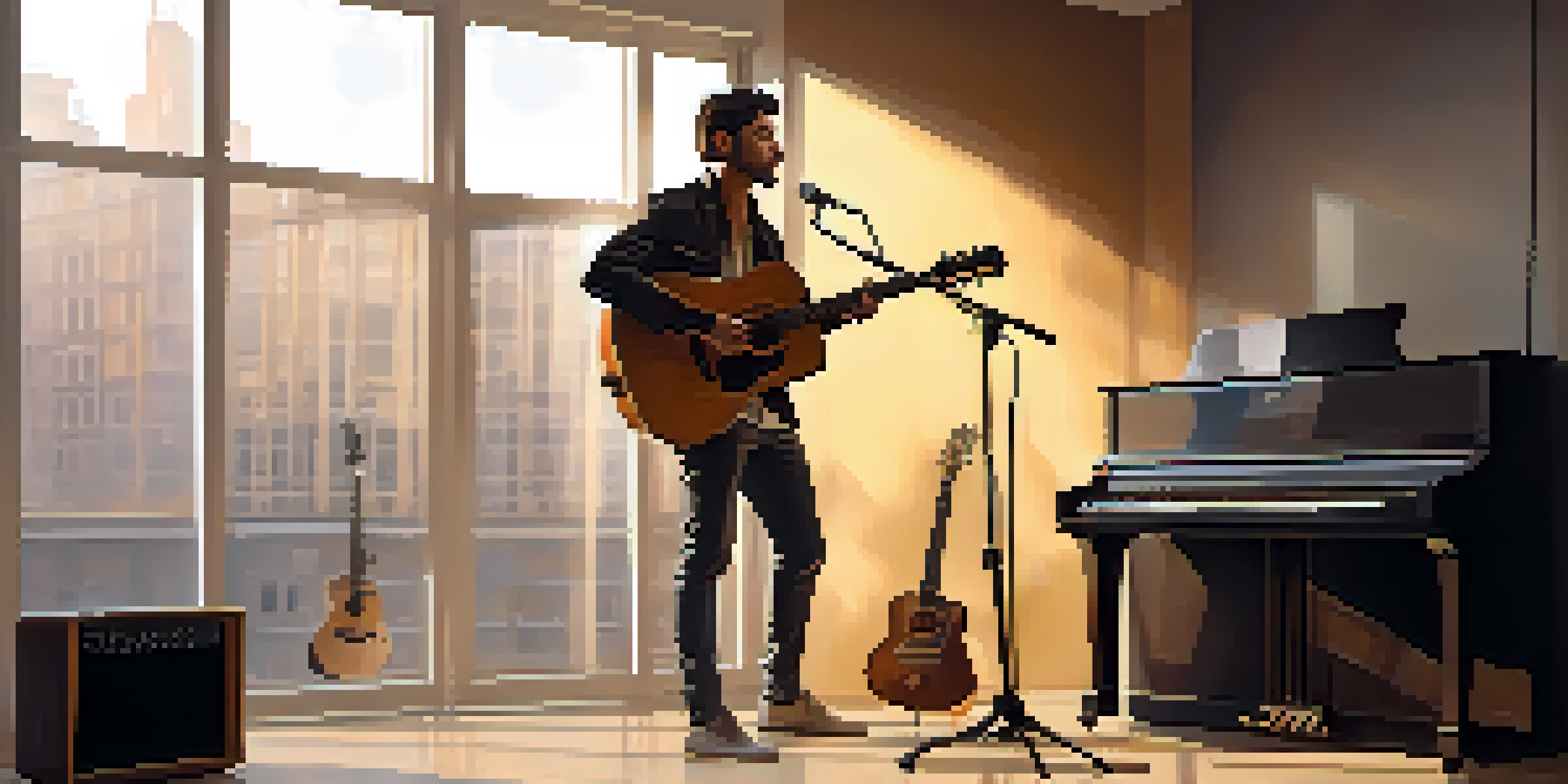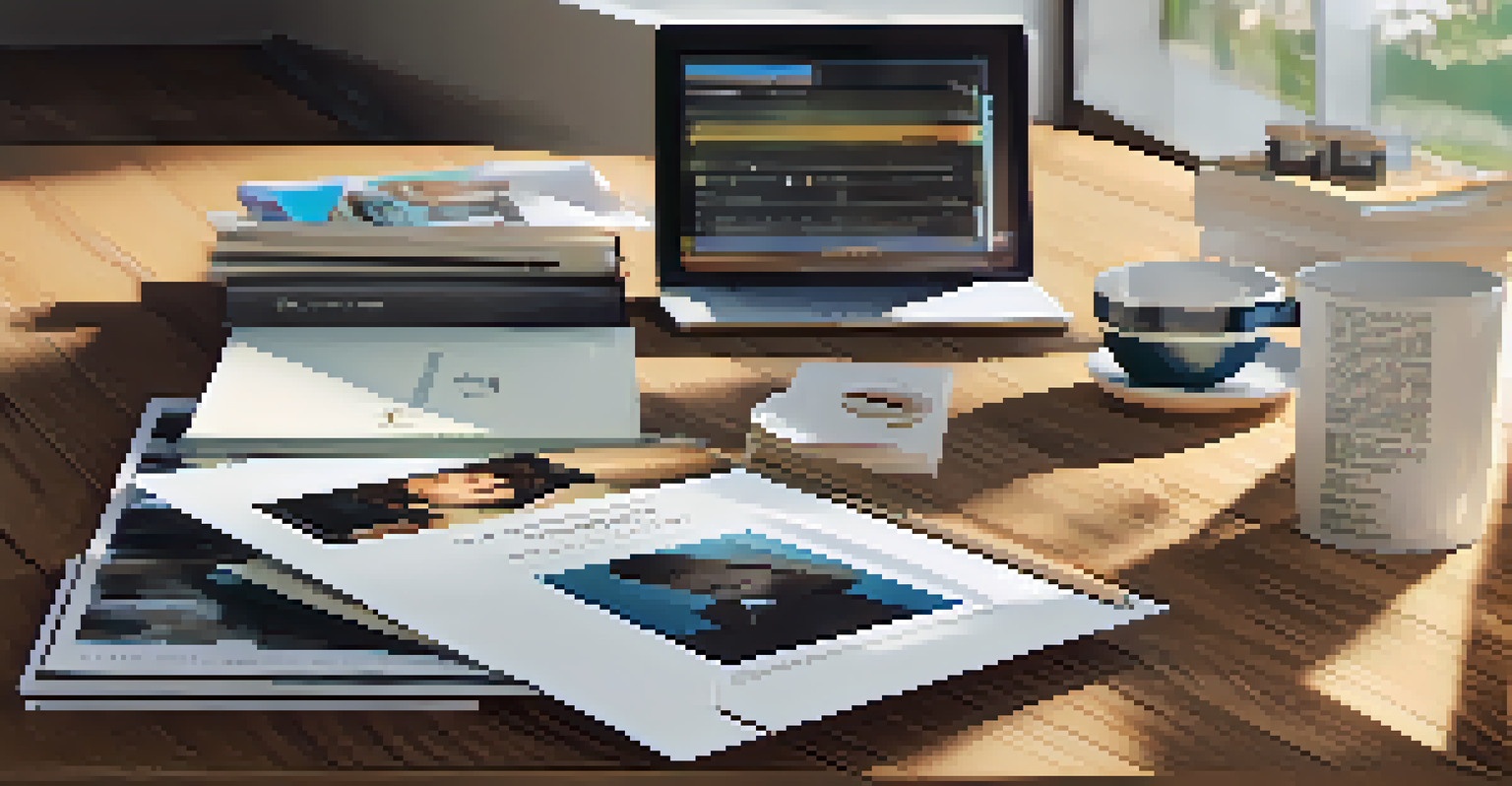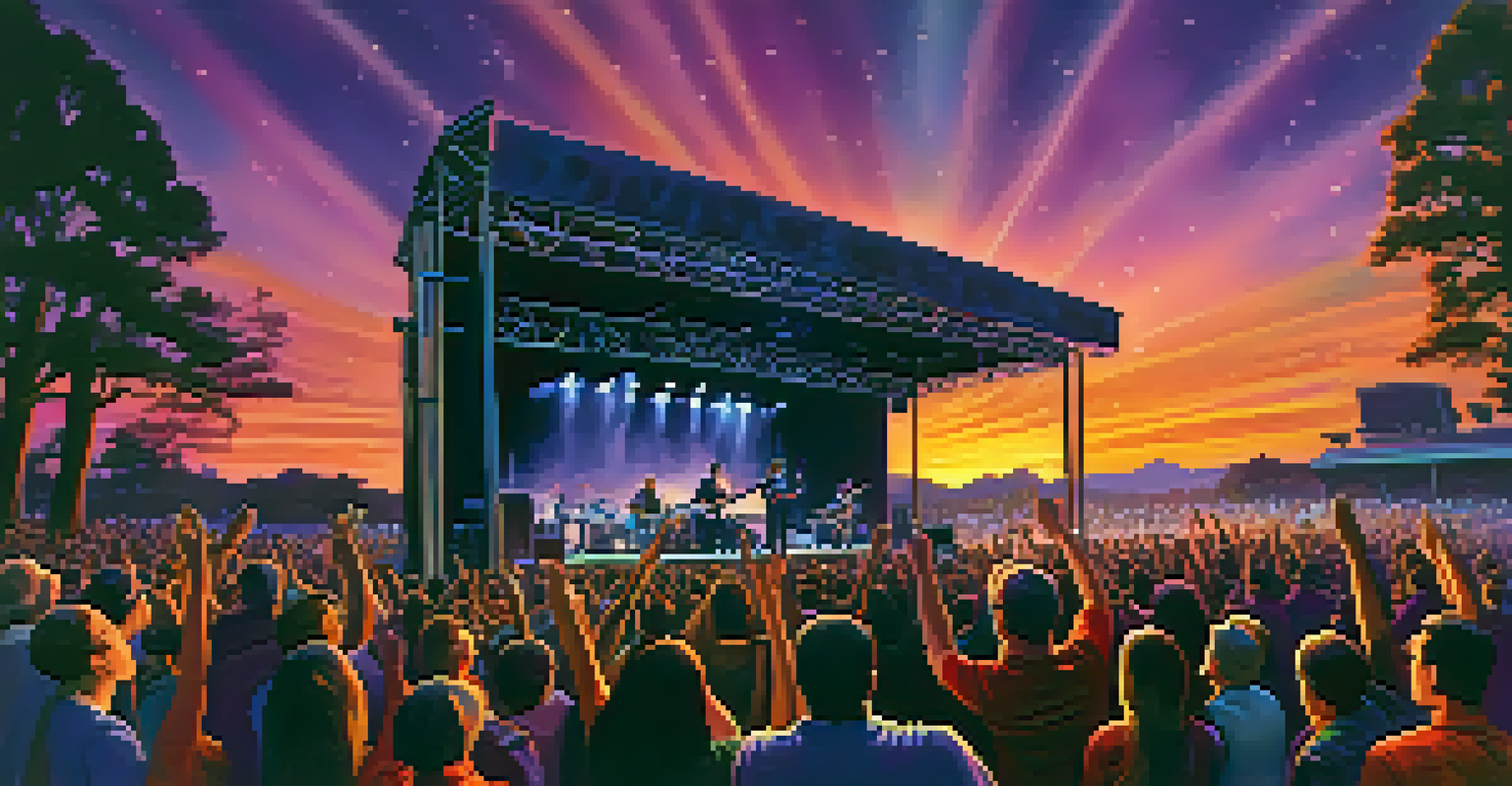Creating Effective Press Kits for Musicians

Understanding the Purpose of a Press Kit
A press kit serves as a musician's introduction to the media, showcasing their brand and music. It’s a vital tool for promoting your work, securing press coverage, and engaging with potential fans. Essentially, it's your calling card, packed with essential information that can help you stand out in a crowded industry.
A press kit is a way to tell your story, share your journey, and connect with your audience.
Imagine walking into a room filled with industry professionals and having a polished portfolio ready to share. That's what a press kit does—it's your chance to make a memorable first impression. It captures your essence and tells your story in a compelling way, ensuring the media has everything they need to cover your music.
By understanding the purpose of a press kit, you can better tailor your content to meet the needs of journalists and bloggers. This clarity will guide you as you gather the necessary materials and craft your narrative, ensuring that your press kit is both informative and engaging.
Key Components of a Musician's Press Kit
An effective press kit typically includes a bio, high-resolution photos, and links to your music. Your bio should tell your story—who you are, your influences, and what makes your music unique. High-quality images are crucial because they visually represent your brand and can be used by the media in their coverage.

Additionally, consider including press releases, quotes from reviews, and any notable achievements or awards. These elements provide context and credibility, making it easier for journalists to write about you. Think of your press kit as a curated collection of your best work that highlights your journey.
Purpose of a Press Kit
A press kit serves as an essential introduction for musicians to the media, helping to promote their work and engage potential fans.
Don’t forget to include your contact information and social media links. This ensures that anyone interested in your music can easily reach out or follow your journey. A well-rounded press kit combines all these elements to create a comprehensive snapshot of your artistry.
Crafting a Compelling Artist Bio
Your artist bio is arguably the heart of your press kit, so it’s essential to make it captivating. Start with an engaging hook that grabs attention, followed by a brief overview of your musical journey. Share your influences, milestones, and what sets you apart from other musicians.
The purpose of a press kit is not just to inform, but to engage and inspire interest in your music.
Keep in mind that your bio shouldn’t be overly lengthy—aim for a concise yet informative piece that can be easily scanned. Think of it like the opening chapter of a novel; it should entice readers to want to learn more. Use a friendly, conversational tone to make it relatable and engaging.
Finally, consider tailoring your bio for different audiences. A bio for a music festival might highlight your live performance experience, whereas one for a magazine could focus on your musical style and creative process. This flexibility can help you resonate with various types of media.
Choosing the Right Photos for Your Press Kit
Photos are crucial in conveying your brand, so choose high-resolution images that reflect your style and personality. A striking image can catch a journalist's eye and make your press kit more memorable. Opt for a mix of candid shots, performance images, and professionally taken portraits to showcase different aspects of your artistry.
When selecting photos, think about the story each one tells. Do they capture the energy of your live shows? Are they reflective of your music genre? The right visuals can evoke emotions and create a connection with potential fans and media alike.
Key Components of a Press Kit
An effective press kit includes a captivating bio, high-resolution images, and links to music, creating a comprehensive snapshot of the artist.
Additionally, ensure your images are accessible for media use. Provide clear guidelines on how they can be used and make them easy to download. This consideration shows professionalism and makes it simpler for journalists to incorporate your visuals into their stories.
Incorporating Music Links Effectively
Including links to your music is vital for giving media a taste of what you offer. Be sure to provide links to your latest singles, music videos, and full albums on popular platforms like Spotify, Apple Music, and YouTube. This way, journalists can quickly access your work and share it with their audience.
Consider creating a dedicated section in your press kit for music links, making it easy for journalists to find and listen to your tracks. You might also include a brief description of each song or album, highlighting themes or stories behind the music. This context can spark interest and make the listening experience more engaging.
Additionally, consider embedding music directly into your digital press kit if possible. This allows journalists to listen to your work without additional clicks, streamlining their experience and increasing the likelihood they’ll check out your music.
Creating a Press Release that Stands Out
A press release is an essential component that can elevate your press kit. It’s your opportunity to announce new music, upcoming shows, or significant milestones. To make it stand out, start with a catchy headline that captures attention and clearly conveys the purpose of the release.
Follow up with a strong lead paragraph that summarizes the news and piques interest. Be sure to include relevant details such as dates, locations, and any supporting quotes. This format makes it easy for journalists to grasp the key points quickly, which is crucial in today’s fast-paced media landscape.
Distributing Your Press Kit
Sharing your press kit with targeted media outlets and using social media can significantly enhance your visibility and opportunities for coverage.
Finally, conclude your press release with a call to action, inviting readers to check out your music or attend your shows. This proactive approach encourages engagement and can help generate buzz around your latest projects.
Distributing Your Press Kit Effectively
Once your press kit is ready, it’s time to share it with the world. Consider sending it to music blogs, magazines, radio stations, and other media outlets that align with your genre. Personalize your outreach by addressing specific journalists or editors, mentioning why you think your music would resonate with their audience.
Utilize social media platforms to promote your press kit as well. Share snippets of your bio, photos, and links to your music, leading followers to your press kit. Engaging with your audience in this way not only builds anticipation but also encourages sharing, which can broaden your reach.

Lastly, don’t forget to follow up with the media contacts after a week or so. A polite reminder can keep your press kit on their radar and show your enthusiasm for getting coverage. Building relationships with journalists can lead to future opportunities and ongoing support for your music.